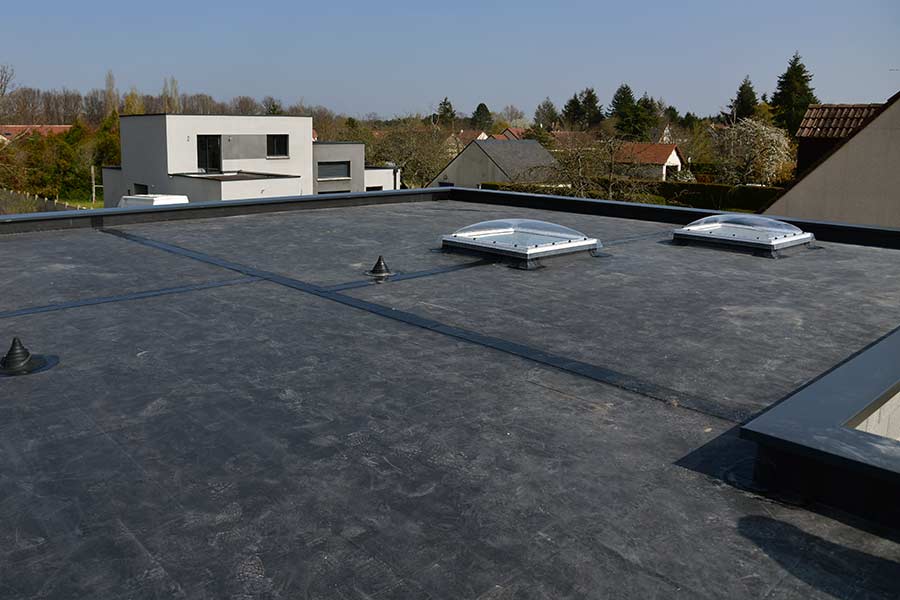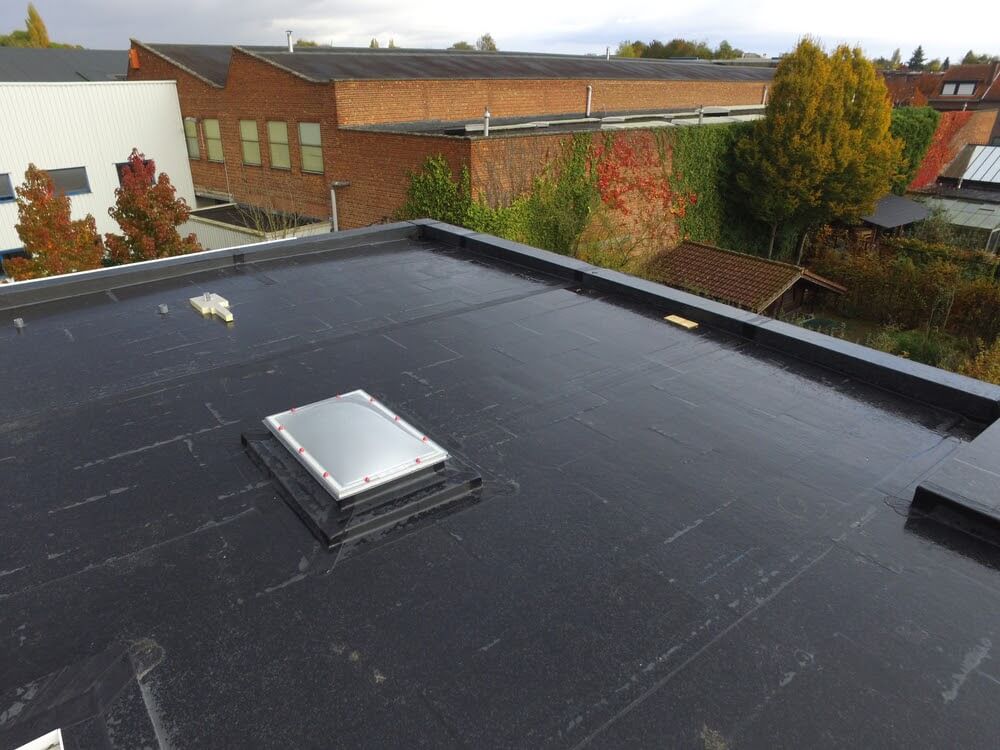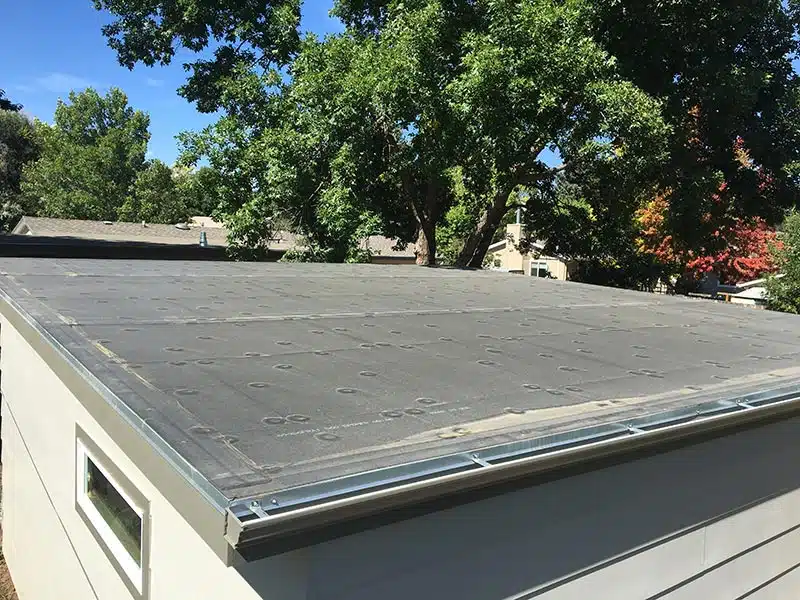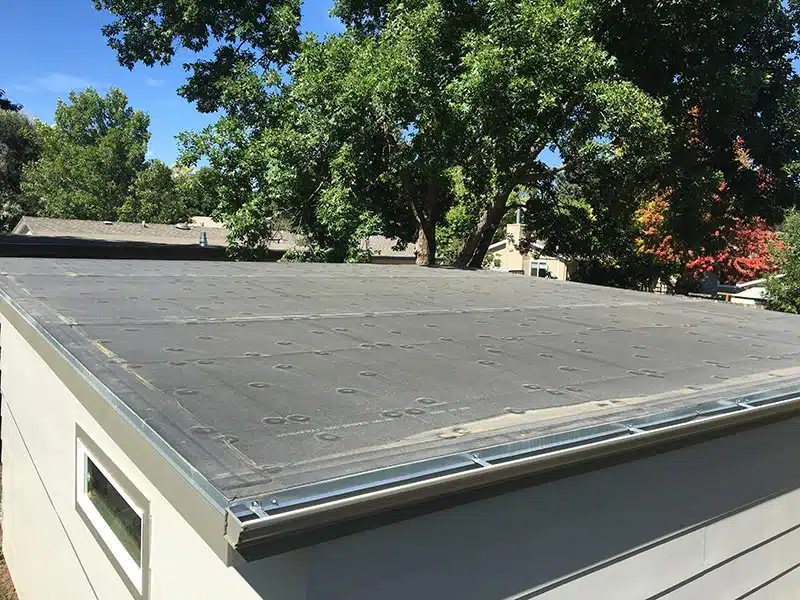
When it comes to protecting your home or commercial property from the elements, choosing the right roofing material is crucial. One option that stands out in the roofing industry is EPDM (ethylene propylene diene terpolymer) rubber roofing. In this blog post, we will explore the key reasons why an EPDM rubber roof is your best choice, especially when it comes to weathering the storm. From its durability and cost-effectiveness to its versatility and eco-friendliness, EPDM rubber roofing has become a popular option for those seeking a reliable and long-lasting roofing solution.
What Is EPDM “Rubber” Roofing?
EPDM (ethylene propylene diene terpolymer), also referred to as EPDM rubber, is a synthetic rubber membrane that is widely used on low-slope flat roofs. It’s categorized as a single-ply roofing membrane, meaning it’s installed on roofing substrates in a single layer.
Where to use EPDM?
EPDM roofing systems are considered to be the ultimate weather protector. They provide protection from wind, rain, hail, sunlight, and extreme temperatures. If you have a flat or low slope roof that can’t be seen from the ground and needs plenty of protection, this type of material is highly recommended. It may not be pretty, but it does its job.
On rooftop decks, EPDM can be covered with a wood deck, outdoor carpet, or Astroturf. It can also be painted with Hypalon paint, but it will have to be repainted every three or four years. If you’re looking for EPDM roofing contractors near me, please feel free to contact us at any time.

The Pros of EPDM Roofing
1.Exceptional Durability:
EPDM rubber roofs are renowned for their exceptional durability, making them an ideal choice for withstanding harsh weather conditions. Whether it’s heavy rain, hail, snow, or intense sunlight, EPDM rubber roofing can endure the elements without succumbing to wear and tear. The material’s resistance to UV radiation and ozone exposure ensures that your roof maintains its integrity over the long term, providing a reliable barrier against the forces of nature.
2.Cost-Effectiveness:
When considering roofing options, cost-effectiveness is a key factor for many homeowners and business owners. EPDM rubber roofing stands out as a budget-friendly choice without compromising on quality. The installation costs are relatively low, and the material’s longevity means fewer maintenance expenses over the years. This makes EPDM rubber roofing an economical investment that pays off in both the short and long run.
3.Versatility in Installation:
EPDM rubber roofing is known for its versatility in installation. Whether your roof has a flat or low-slope design, EPDM can be easily adapted to fit the contours of your structure. The flexibility of the material simplifies the installation process, allowing for efficient coverage and a seamless finish. This adaptability makes EPDM rubber roofing an excellent option for a variety of architectural styles and designs.
4.Energy Efficiency:
EPDM rubber roofing contributes to energy efficiency by reflecting the sun’s rays and preventing excessive heat absorption. This reflective property helps maintain a cooler indoor temperature during hot weather, reducing the strain on HVAC systems and lowering energy bills. By choosing EPDM rubber roofing, you not only protect your property from the elements but also contribute to a more energy-efficient and sustainable living or working environment.
5.Environmentally Friendly:
For those who prioritize environmentally friendly building materials, EPDM rubber roofing is an excellent choice. The production process of EPDM involves minimal environmental impact, and the material itself is fully recyclable. Choosing EPDM contributes to sustainability efforts and reduces the overall carbon footprint associated with roofing materials.
How Is EPDM Roofing Installed?
There are three different installation methods for EPDM roofing systems:
Mechanically Fastened
Most EPDM roofing systems are installed this way. This method utilizes metal fasteners and plates to secure the membrane to the insulation board and roof decking. It’s also the quickest and easiest method of installation.
Fully Adhered
For this method of assembly, the membrane is glued directly to the insulation layer with a specialized bonding adhesive. This type of assembly is the most time consuming to install but typically lasts longer. It also has the greatest resistance to wind uplift and provides a slight increase in energy efficiency.
Ballasted
In a ballasted system, the EPDM membrane is loose laid over the roofing substrate and held in place with smooth stones or concrete pavers. This type of installation method is the most aesthetically pleasing and provides the highest degree of energy efficiency.

How much does an EPDM roof cost ?
Your EPDM roofing cost can vary depending on a number of factors. What’s good to remember, though, is that it’s one of the most cost-effective materials that you can choose for your home. On average, the cost of this roofing material will range between $6,000 and $18,000, sometimes exceeding $24,000 depending on the complexity of the installation, roof pitch, accessibility, location, type and thickness of insulation, and whether an old roof needs to be removed.
Continue reading to find out more about the average cost of materials, the average cost of labor, and the costs of accessories and tools that are typically needed.
EPDM roof maintenance and cleanings
Like any other roofing material, EPDM roofs may require occasional maintenance and repairs. The good news is that repairs for rubber roofs are normally quick and inexpensive. Applying special tape or liquid rubber may be all that’s needed to fix a leak.
Also, the maintenance needed is minimal compared to other roofing types. Some EPDM roofs require no maintenance other than an acrylic paint job once every decade. This is recommended to keep the color of the roof vibrant throughout its lifespan.
Cleaning should be done along with an inspection about once a year. The roofs should be kept clean and free from debris.
EPDM Alternatives
There are several alternatives to EPDM, with two of the most common being TPO and PVC.
TPO (Thermoplastic Polyolefin) has been gaining in popularity in recent years for a few reasons. First, it’s energy-efficient because it helps reflect sunlight away from a building, allowing air conditioners to work more efficiently during the summer months. It also offers more protection from punctures than EPDM.
PVC (Polyvinyl Chloride) is another popular rubber roofing alternative. It’s one of the strongest types since it has a 50% higher breaking point than industry standards. It stands up to extreme temperatures, sun, and harsh winds.
What does EPDM roofing stand for?
EPDM is a synthetic rubber roofing material that stands for Ethylene Propylene Diene Monomer. It can be used for commercial and residential buildings that have roofs with low slopes. The material consists of two ingredients: propylene and ethylene.
Conclusion:
In the quest to weather the storm and protect your property, an EPDM rubber roof emerges as the optimal choice. Its durability, cost-effectiveness, versatility, energy efficiency, and eco-friendliness make it a standout option in the roofing industry. When investing in a roofing solution that can withstand the elements and provide long-term value, consider the many benefits that an EPDM rubber roof brings to the table. Weatherproof your property with confidence, knowing that your choice of roofing material will stand strong against the toughest conditions.



